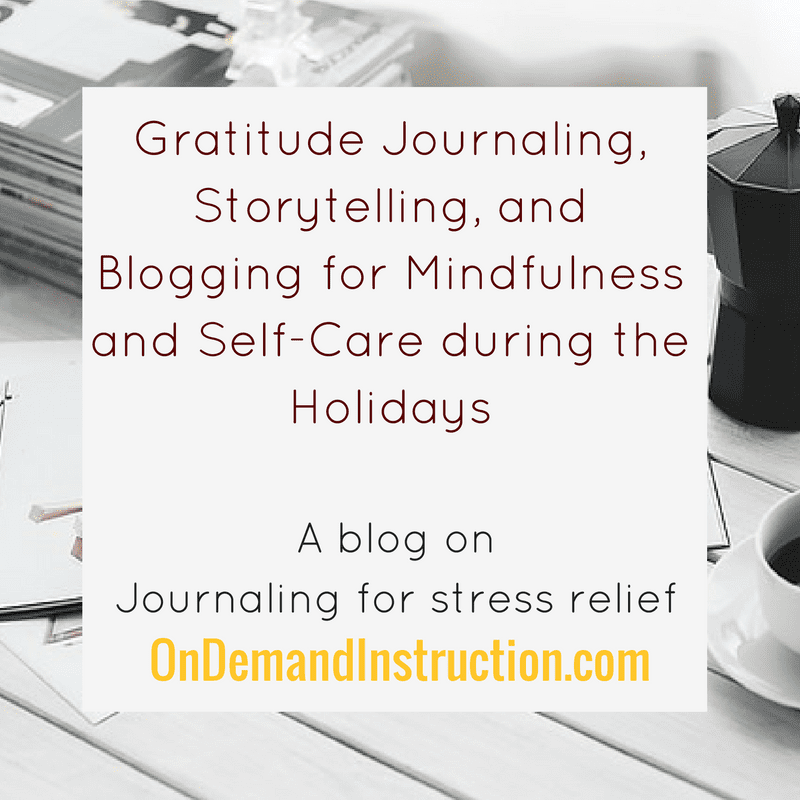
Like many, I tend to think of journal writing as personal writing with a singular audience. The process of writing to, of, and by oneself has the potential to break a feedback loop that causes everything from self-doubt to depression. When we write to ourselves, we tend to sort ourselves out. We tend to become better organized and clarify our goals and intentions. We tend to right our ships regardless of the waters we sail.
But does journal writing have to be kept to ourselves? Nope. There is no law of the universe that states that journal writing must be published only with oneself. We can devise opportunities to share our personal writing with others; it is just a matter of figuring out how to do that in a way that is useful to the larger audience. The holidays can allow for opportunities to share personal journaling with family and friends much more natural than sending an out-of-the-blue message of shared material. OK, so how might writers share journal writing with others? 
A Holiday Newsletter
If you think back to the days prior to social media, people used to depend on email for sharing information. Back then, we forwarded chain letters, jokes, and funny pictures to our friends and family as a pastime; in those days, the wonder of the internet allowed us to communicate directly, specifically. We chose who would receive our messages and opted not to share with the entire world but with a select few. We could control our communication in this way which allowed us a safer venue for sharing. A popular custom was the holiday newsletter. Writers would pen newsletters that included updates on the kids’ activities, accomplishments for the year, trips taken, books read, events attended, and news shared. Some writers are reviving this not-so-ancient practice by creating their own newsletters to share once more with Tiny Newsletters. A Tiny Newsletter can be a creative outlet for journal writing that allows writers a comfortable means for sharing creative writing, reflections, and expectations for the year to come in a way that is fun for the readers. Many programs are available for this format: tinynewsletter.com allows writers to create newsletters that family and friends can sign up to receive; think of this as a controlled blog where subscribers are known friends rather than strangers on the ‘net. If the Tiny Newsletter feels too open like an opportunity for vulnerability, consider creating a newsletter using Google Docs, MS Publisher, or plain old Word to create a newsletter that can be attached to an email. Insert photos, scanned drawings, and decorations to dress up the words on the page. 
Year-End Poetry and Creative Writing
A few years ago, my heart began aching for a typewriter. I picked up a 60s vintage turquoise beauty off of Craigslist to satiate my cravings for typing keys that actually slammed hammers against real paper. I quickly remembered that my typing fingers had to slow down when tickling the typewriter’s keys to avoid a traffic pile up of stuck hammers. But, the joy that I was able to recapture was the beauty of letters punched onto the page, because typed pages have texture, depth, and variation to them that printed pages never will attain. After my children hijacked my typewriter (as was inevitable), we started to type our poetry and stories together. These little beauties made their way to an end-of-year creativity journal that we shared with family in lieu of Christmas cards last year. We typed up a short introduction and wrote two creative pieces each. We typed up each piece separately and shipped them off to a select few friends as a unique gift. Creating a midwinter’s creativity journal can be an absolute delight to create and to receive; it allows for an innovative outlet for journal writing that may otherwise go without an audience.
Shared Ideas Letter
A shared ideas letter forces a reaction from its readers, instigating a conversation rather than just a single person sharing out. I create a shared ideas letter and distribute it to my creative friends as a means for building support for my creative projects. I will list off the projects that I plan to take on and ask friends to agree to help me achieve these goals throughout the year. For example, I sloppily attend a monthly writer’s workshop not far from my house, but I need my friend Christy to remind me to get there. As well, I am working my way through a novel and need my writing partner Heather to meet me once a week for our critique group; she has a knack for finding my weaknesses and pointing out where I need to improve. My shared ideas letter is a series of descriptions of what I want to accomplish for the coming year—attending the writer’s workshops, completing my novel, publishing academic papers, and maintaining my blogging schedule. I describe each activity in my letter and ask friends to support me in these endeavors. The letter creates a bond between me and my creative compatriots, as it usually sparks their requests for support in their projects in return. We all start the new year knowing what goals we set and what help we need in achieving them. 
Yule Reflections
The ancient Scandinavians would send their strongest into the forest to find the biggest tree they could lop down and drag to the hall. They would decorate the yule log with winter berries, evergreen strands, and fragrant herbs before lighting it to burn for the next one to two weeks. Before they lit the yule log, they would scratch their bad habits onto bits of paper or wood and their hopes for the upcoming year into crevices in the wood. The burning would release the bad habits to be forgotten and ignite the hopes and dreams to come true in the upcoming year. The celebration was an affirmation of life, as winter solstice was one of the only times they would enjoy meat, mead, ale, and warmth. They turned the darkest days into their cheeriest. Today, we can do something similar by transforming our journal writing into a yule reflection to share with friends and family. Write up a one to two page letter that shares: what went well this year, what goals were met, what losses were felt, what grief was experienced, and what bad habits were released. Then continue with affirmations for the new year: what goals will you set, what plans do you have, what trips will you take, what purchases will you make, what creations will you craft, and what relationships will you rekindle. This yule reflection can be both therapeutic for yourself as the writer as well as inspirational for the friends who have the pleasure of reading it. The holiday season offers many opportunities to share journal writing with a larger audience—either in a small group of just a few individuals or a larger group of friends and family—it can challenge us to rework our journal writing in a way that can inspire, charm, and entertain others. Usually our journal writing we keep hidden, but there is no law of the universe that says we cannot share it for a special occasion. 
Is life sometimes overwhelming? Do the blues get you down? Today, people are more stressed out than ever before, but journal writing can help. Jumpstart your journal writing practice with this course, which is designed to help you establish a journal writing practice. Start onto the path of mindfulness and self-care in this journal writing course.
Related Blog PostsComments are closed.
|
About the SiteWelcome, Writers! Archives
September 2023
|




 RSS Feed
RSS Feed